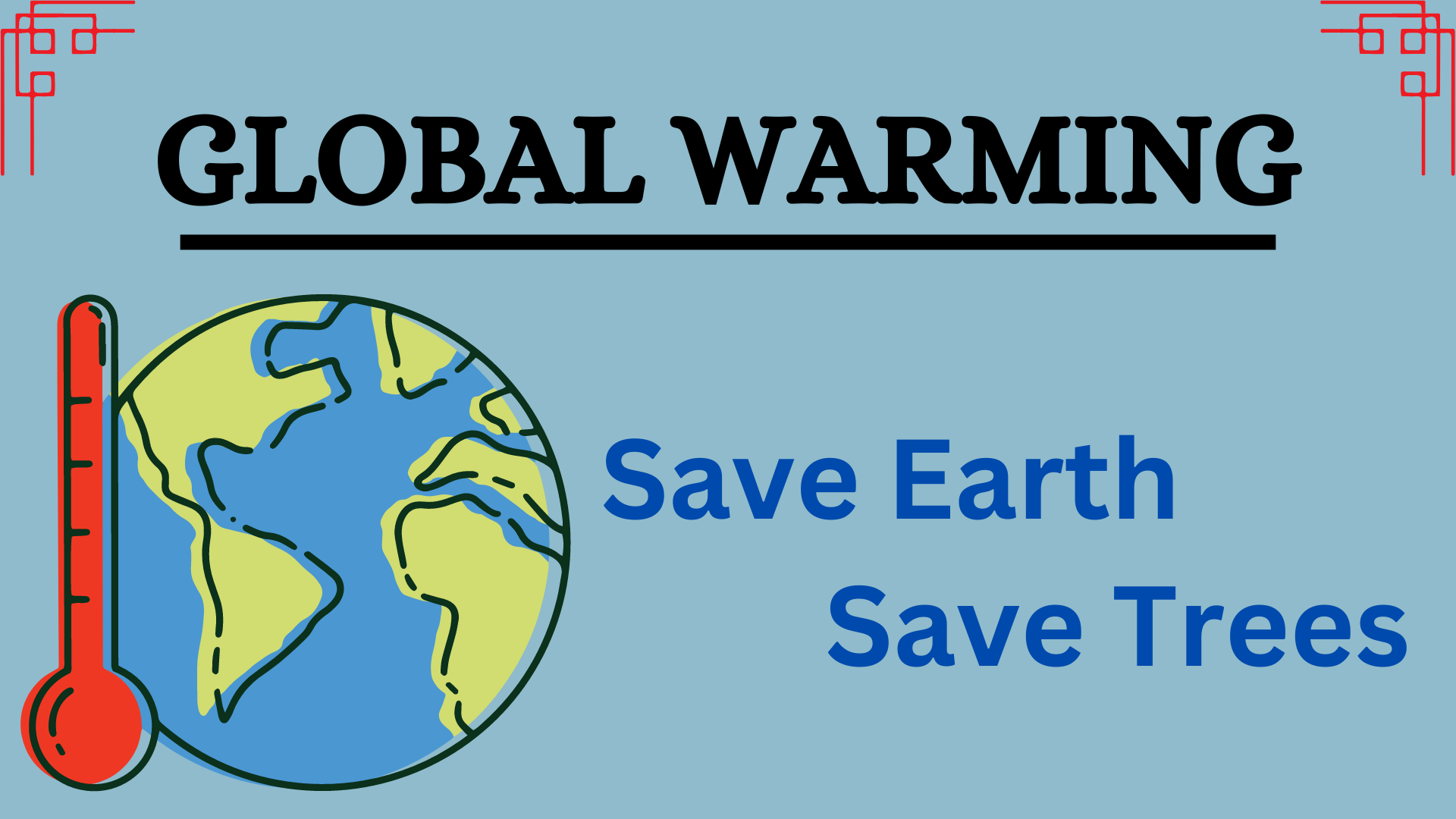
One of the most important concerns of our day is global warming, which is grabbing the interest of researchers, decision-makers, and the general public. One of the main elements of climate change is global warming, which is defined as the gradual increase in the Earth’s climate system’s average temperature. It has significant effects on society, the economy, and the environment. The goal of this article is to present a thorough overview of global warming, covering its causes, impacts, contributing variables, and possible remedies.
What is Global warming?
The term “global warming” describes the continuous rise in average world temperatures, mostly brought on by human activity intensifying the greenhouse effect. The Earth warms naturally as a result of the greenhouse effect, which is caused by specific gases in the atmosphere trapping heat and preventing it from escaping into space. The average temperature of Earth would be roughly -18°C (0°F) without the greenhouse effect, rendering most modern life forms uninhabitable. But because of human activity, this effect has become more pronounced, warming the world excessively.
How Does Global Warming Happen?
An increase in the atmospheric concentration of greenhouse gases (GHGs) is the cause of global warming. Carbon dioxide (CO₂), methane (CH₄), nitrous oxide (N₂O), and fluorinated gases are the main greenhouse gases. The Earth’s surface gets warmed by this “blanket” of heat that is created when these gases absorb solar heat. Here is a closer look at the operation of this process:
1. Solar Radiation: Solar radiation is the energy that the sun emits and travels to Earth. While the remainder of this energy is absorbed by the Earth’s surface and causes warming, some of it is reflected back into space by clouds, ice, and other reflective surfaces.
2. Infrared Radiation: After being absorbed, the Earth releases infrared radiation back into the atmosphere. A considerable amount of this infrared radiation is held in the atmosphere by greenhouse gases, although some of it does escape into space.
3. Heat Retention: Infrared radiation is absorbed by greenhouse gases and is then reradiated in all directions, including back towards the Earth’s surface. The surface and lower atmosphere remain warmer as a result of this process than they would be in the absence of these gases.
4. Human Activities: The concentration of greenhouse gases in the atmosphere has increased dramatically since the Industrial Revolution as a result of human activities like burning fossil fuels (coal, oil, and natural gas), deforestation, industrial processes, and agricultural practices. This has intensified the greenhouse effect and raised Earth’s temperature.
Impacts of Global Warming
Global warming has many different and wide-ranging effects on ecosystems, human health, economies, and weather patterns. The following are some of the main effects:
1. Climate Change: Climate change is fueled by global warming and leads to more intense and erratic weather patterns. This includes heat waves that are more frequent and intense, droughts, hurricanes, and torrential rains.
2. Rising Sea Level: Sea levels rise as a result of the melting of glaciers and polar ice caps brought on by rising global temperatures. Coastal settlements are at risk of floods, erosion, and loss of plant, animal, and even human habitat.
3. Ocean Acidification: Ocean acidification is a result of increased carbonic acid concentrations brought on by rising CO2 levels. This has a detrimental effect on marine life, especially on creatures like corals and shellfish that have skeletons and shells made of calcium carbonate.
4. Ecosystem Disruption: Many species find it difficult to adjust to the swift changes in temperature and weather, which causes changes in migratory patterns, disruptions in food chains, and range changes in their habitats. Certain species are at danger of going extinct.
5. Agricultural Challenges: Crop yields, water availability, and soil health are all impacted by variations in temperature, precipitation, and extreme weather events. Food shortages, price increases, and a rise in food insecurity may result from this.
6. Human Health: Because warmer temperatures increase the range of disease-carrying insects like mosquitoes, global warming has a role in the spread of diseases. There are direct health concerns associated with heatwaves and air pollution, especially for disadvantaged people.
7. Economic Costs: Dealing with the effects of global warming comes at a significant financial cost. This covers the price of responding to disasters, fixing infrastructure, paying for medical treatment, and lost production.
Factors Responsible for Global Warming
Global warming is caused by a number of human actions that boost greenhouse gas emissions:
1. Burning Fossil Fuels: The main cause of CO2 emissions is the burning of fossil fuels for industry, transportation, and energy production. When burned, coal, oil, and natural gas produce large volumes of CO2.
2. Deforestation: Trees serve as carbon sinks by absorbing CO2 during photosynthesis. This ability to absorb carbon is diminished when forests are removed for logging, urbanization, or agriculture, and the stored carbon is released back into the atmosphere.
3. Agriculture: The emission of nitrous oxide (N2O) from fertilized soils and methane (CH3) from cattle digestion and manure management are two ways that agricultural practices contribute to global warming.
4. Industrial Processes: There are several industrial processes that release a lot of greenhouse gases into the atmosphere, including the manufacturing of chemicals, cement, and metal smelting.
5. Waste Management: Methane is produced by landfills during the anaerobic breakdown of organic waste. This issue may be made worse by insufficient waste management techniques.
6. Land Use Changes: Urbanization and the conversion of natural habitats into agricultural land are two examples of land use changes that have an impact on the carbon cycle and raise greenhouse gas emissions.
How To Reduce Global Warming
A complex strategy including international collaboration, legislative initiatives, technology advancements, and individual acts is needed to combat global warming. The following are some essential tactics to lessen global warming:
1. Transition To Renewable Energy: Greenhouse gas emissions can be greatly decreased by switching from fossil fuels to renewable energy sources including solar, wind, hydro, and geothermal energy. Investing in smart grid technologies and energy efficiency is also very important.
2. Enhance Energy Efficiency: Energy consumption and emissions are decreased by increasing energy efficiency in industrial operations, buildings, and transportation. This entails encouraging public transit, upgrading buildings, and implementing energy-efficient appliances.
3. Reforestation and Afforestation: Restoring and planting forests can improve carbon sequestration—the process of absorbing CO2 from the atmosphere. It is equally crucial to prevent deforestation of already-existing woods.
4. Sustainable Agriculture: Methane and nitrous oxide emissions can be decreased by implementing sustainable agricultural techniques as organic farming, precision farming, and agroforestry. Encouragement of plant-based diets can also help to reduce the market for animal products.
5. Carbon Pricing: The imposition of carbon pricing mechanisms, including cap-and-trade programs or carbon taxes, can offer financial incentives for cutting greenhouse gas emissions. Businesses are encouraged by these policies to innovate and use greener technologies.
6. Promote Public Awareness and Education: Gaining support for climate policy and encouraging behavioral changes requires educating the public about the causes and effects of global warming. Campaigns for public awareness have the power to inspire both private initiative and group efforts.
7. International Cooperation: Global warming is a worldwide problem that calls for concerted international action. International accords, like the Paris Agreement, seek to bring nations together in the reduction of emissions and limitation of the increase in global temperature.
8. Support Eco-Friendly Technologies: Long-term mitigation initiatives require funding for research and development of low-carbon technologies such enhanced nuclear power, carbon capture and storage (CCS), and electric cars.
9. Reduce Waste: Lowering greenhouse gas emissions from landfills and waste management procedures can be achieved by putting trash reduction techniques into practice, such as recycling, composting, and cutting back on single-use plastics.
10. Adaptation Measures: It’s critical to adapt to the unavoidable effects of global warming in addition to mitigation. This include creating disaster response strategies, safeguarding water supplies, and constructing resilient infrastructure.
Conclution
Since global warming is a complicated and diverse problem, all facets of society must act quickly to address it. We may take proactive measures to reduce the effects of global warming and create a more sustainable future by being aware of its causes and effects. It is feasible to control the increase in global temperatures and cut greenhouse gas emissions by combining individual acts, international cooperation, legislative changes, and technical innovation. For the sake of the environment and the next generation, action must be taken immediately.
